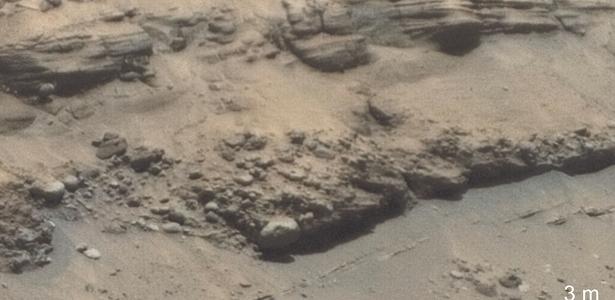The Perseverance Rover, which arrived at Mars in February, provided the first high-resolution images of the Red Planet’s soil it took Supercam, located on the mast of NASA’s robot, and the findings bolster signs of life at the landing site.
Sent via satellite, they confirmed what was observed from orbit: signals in the crater the lake It indicates that about 3.6 billion years ago there was a closed lake fed by a river.
The study published in Science, the first since the Perseverance landing, provides many details about the history of the crater, which is about 35 kilometers in diameter.
The Supercam made it possible to identify sediment layers that are “a great candidate for finding signs of past life,” the French National Center for Scientific Research (CNRS) explained.
Coming from a 40-meter-high hill called Kodiak, these layers, astro-geologist Nicholas explained, are “clay or sandy deposits, in which organic matter is easy to preserve.” Mangold, one of the study’s authors.
‘organic matter’
According to Sylvester Morris, of the Research Institute of Astrophysics and Planetary Science at Paul Sabatier University, in Toulouse, the images indicate the presence of organic matter deep in the soil and in sediment deposits in the river delta.
Living organisms produce this type of substance – a mixture of complex molecules of carbon, hydrogen, nitrogen and a little bit of oxygen.
This confirms the interest of astrobiology in Jezero crater [ciência que estuda a vida no universo]”It is to explain.
The persistence also revealed the unexpected presence of large stones and boulders, indicating the presence of strong river currents in the past.
According to the study, the end of the crater period will be associated with greater climate change.
“What kind of climate generated this shift? Desertification or glaciation? That’s what we’re investigating,” Mangold said.
All these observations, made by the probe at a distance of more than two kilometers from the studied geological formations, will now allow the equipment to focus on collecting samples, which will have to be brought to Earth by 2030 for examination.
Two other robots, Curiosity and Insight, are currently exploring other points on Mars.
In September 2022, the Russian-European ExoMars mission is expected to send a robot to Mars designed to drill into the land of the Red Planet more than a meter deep, an unheard of feat.

“Beer Geek. The Evil Ninja of Pop Culture. Life Coffee Scholar. Professional Internet Teacher. Meat Teacher.”

:strip_icc()/s01.video.glbimg.com/x720/12789244.jpg)
:strip_icc()/i.s3.glbimg.com/v1/AUTH_59edd422c0c84a879bd37670ae4f538a/internal_photos/bs/2024/f/t/6buA8UQpywNnqYnl19SA/mireya.jpg)


:strip_icc()/i.s3.glbimg.com/v1/AUTH_59edd422c0c84a879bd37670ae4f538a/internal_photos/bs/2024/g/y/4q3SqCTRmArq2ahiCzeA/captura-de-tela-2024-07-23-002103.png)

More Stories
Screenshot: Meaning, How to Take a Screenshot & Uses
6 Great Secrets to Edit Sports Videos
WhatsApp: The function allows you to reply to messages in notifications